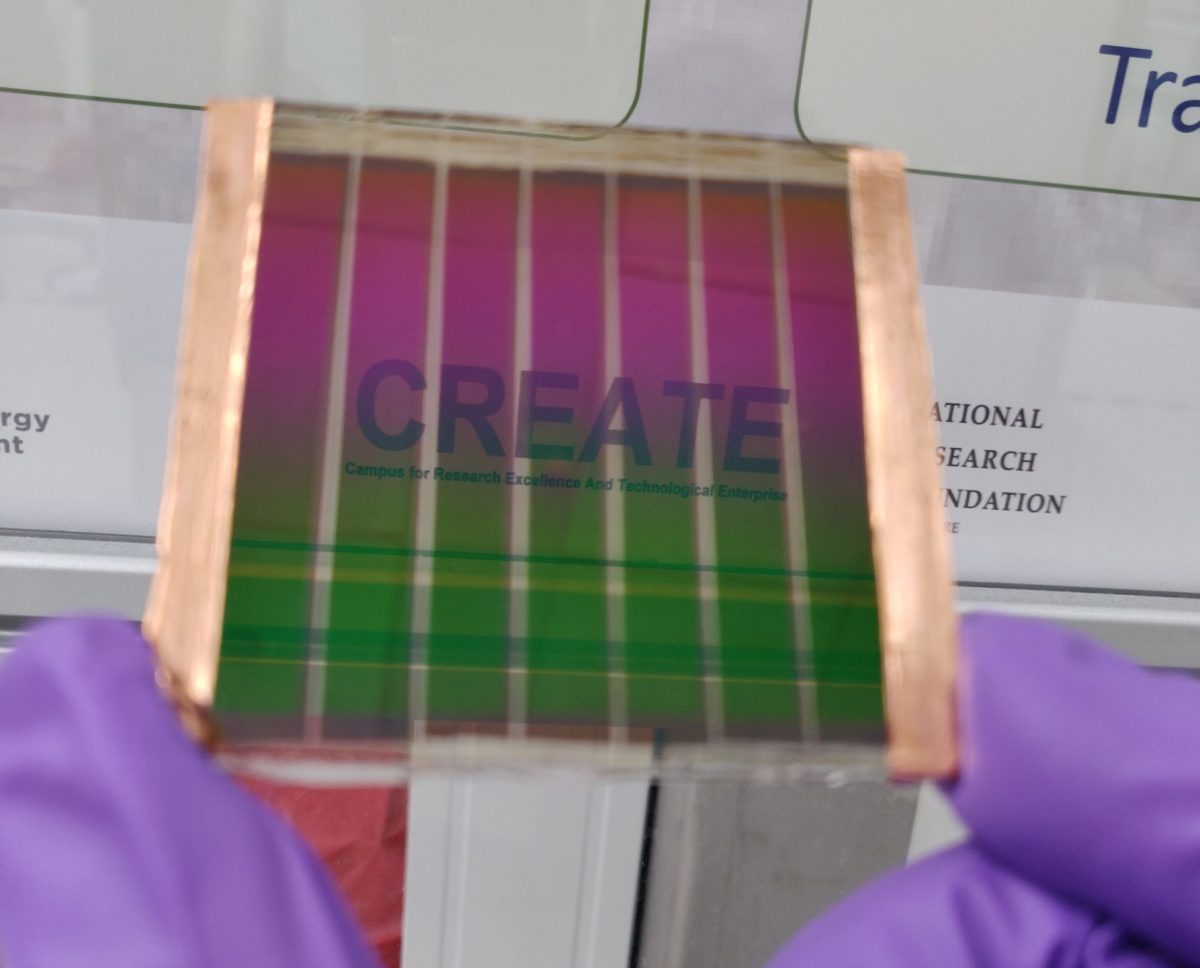Scientists at Nanyang Technological University in Singapore have fabricated a large-area semitransparent perovskite solar panel for applications in building-integrated photovoltaics (BIPV), vehicle-integrated solar, and smart glasses.
“The results on our minimodule will encourage the development of the next generation performance-optimized and aesthetically pleasing buildings- and product-integrated photovoltaics,” researcher Monika Rai told pv magazine.
The device purportedly reduces the typical losses that semitransparent panels show compared to opaque modules. This was achieved through three different strategies: a new passivation technique, a transparent conductive oxide (TCO) layer with minimum physical damage to the underlying perovskite, and a down-converting phosphor material that harvests low energy photons.
The main concern of the scientists was the interaction behavior of the semitransparent perovskite film used for the cell with the transparent top contacts, which has lower absorption and poorer film quality.
“It is severely susceptible to degradation due to under-coordinated ions at its crystal surfaces and the grain boundaries,” they said, noting that Eu3+ ion doping was used to improve the quality and stability of perovskite precursors
The highly transparent and conducting TCO was fabricated via tin-doped indium-oxide (ITO) sputter deposition.
Popular content
“Careful tuning of power and substrate distance is performed to reduce perovskite damage while obtaining a conductive clear ITO film free of delamination,” the group said.
They interconnected the solar cells via P1, P2, and P3 scribes to build a mini module with an active area of 4.9 cm2 × 4.3 cm2 and a substrate area of 6 cm2 × 6 cm2. Under standard illumination, the device achieved a maximum efficiency of 9.5% with a visible transmittance of up to 20%, which the scientists described as the best so far for this area and architecture. Under low light illumination, the efficiency was raised to 12.%.
“Increasing module size is indeed an engineering hurdle and requires R&D support. But, there is a definite potential as perovskite solar cells scalability is now proven by different coating techniques,” Rai explained. “Our fully semi-transparent module serves as a strong prototype for BIPV/window applications.”
The research group described the module in “Multimodal Approach towards Large Area Fully Semitransparent Perovskite Solar Module,” which was recently published in Advanced Energy Materials.
This content is protected by copyright and may not be reused. If you want to cooperate with us and would like to reuse some of our content, please contact: editors@pv-magazine.com.



By submitting this form you agree to pv magazine using your data for the purposes of publishing your comment.
Your personal data will only be disclosed or otherwise transmitted to third parties for the purposes of spam filtering or if this is necessary for technical maintenance of the website. Any other transfer to third parties will not take place unless this is justified on the basis of applicable data protection regulations or if pv magazine is legally obliged to do so.
You may revoke this consent at any time with effect for the future, in which case your personal data will be deleted immediately. Otherwise, your data will be deleted if pv magazine has processed your request or the purpose of data storage is fulfilled.
Further information on data privacy can be found in our Data Protection Policy.